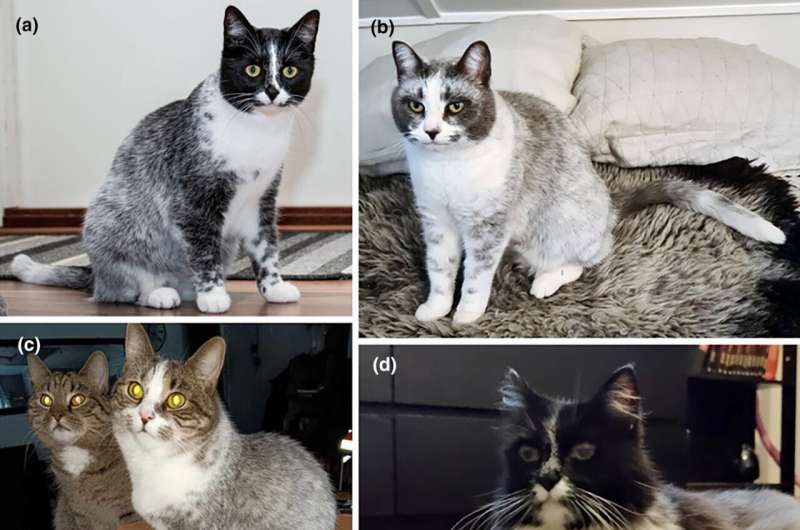May 23, 2024 report
This article has been reviewed according to Science X's editorial process and policies. Editors have highlighted the following attributes while ensuring the content's credibility:
fact-checked
trusted source
proofread
Genetic mutation responsible for new coat pattern in cats in Finland identified

A team of geneticists and animal welfare specialists from the U.K. and one from the U.S. has identified the genetic mutation responsible for a newly discovered cat coat color pattern in Finland. In their study, published in the journal Animal Genetics, the group sequenced the genomes of two of the cats.
In 2007, people in Finland began to notice that some feral cats had a distinctively colored coat. Instead of what would be a typical tuxedo pattern, the cats had hairs that were black at the base and grew progressively whiter toward the tip. The pattern soon became known as the "Finnish mutation" as some were adopted and brought into homes. In this new study, the research team explored the genetic mutation that was responsible for the change.
The researchers gave the new coat pattern an official name—they dubbed it salmiak, after a popular Finnish licorice. They next put word out that they were looking for cats with the new coat pattern, asking volunteers to bring them in to be tested.
Initial testing of the cats turned up negative for mutations that are known to impact white fur coloration. That led the team to conduct whole genome sequencing for two of the cats. They found a mutation at a site near the KIT gene that had previously been associated with several white hair patterns in housecats—they also noted that a span of the sequence was missing downstream.
Next, the research group verified they had found the variant they were looking for—they looked for it in 181 cats and found it in three of them that had the salmiak coat. All three had also inherited it from both of their parents. They also found three other cats that had the variant but not the salmiak coat—they had inherited the mutation from just one parent.
The research team suggests they have identified the recessive mutation responsible for the development of the new, unique coat pattern.
More information: Heidi Anderson et al, A new Finnish flavor of feline coat coloration, "salmiak," is associated with a 95‐kb deletion downstream of the KIT gene, Animal Genetics (2024). DOI: 10.1111/age.13438
© 2024 Science X Network





















